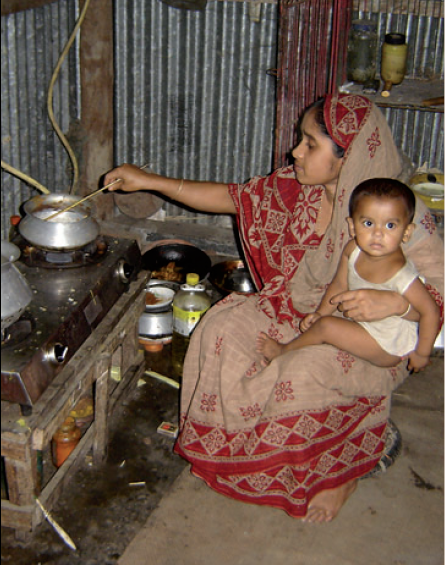Difference between revisions of "Biogas Combustion"
| Line 22: | Line 22: | ||
</ul> | </ul> | ||
| − | + | == Manuals, videos, and links == | |
| − | |||
| − | == | ||
* General information about Biogas as source of energy [http://www.snvworld.org www.snvworld.org ] | * General information about Biogas as source of energy [http://www.snvworld.org www.snvworld.org ] | ||
* General information [http://www5.gtz.de/gate/ http://www5.gtz.de/gate/] | * General information [http://www5.gtz.de/gate/ http://www5.gtz.de/gate/] | ||
Revision as of 03:58, 10 January 2013
Biogas is a mixture of methane (60%) and carbon dioxide (40%), produced by anaerobic digestion of organic material, usually animal dung, human excreta and crop residue. Small-scale biogas digesters provide fuel for domestic lighting, cooling and cooking (see Anaerobic Biogas Reactor). Large-scale biogas plants are able to produce sufficient gas to fuel engines to generate electricity. The (thermal) energy available from biogas is about 6 kWh/m³. This corresponds to half a litre of diesel oil and 5.5 kg of firewood. 1 kg of human faeces generates about 50 litres of biogas: 1 kg of cattle dung delivers 40 litres of biogas, and 1 kg of chicken droppings generates about 70 litres of biogas.

| Advantages | Disadvantages |
|---|---|
| Clean energy supply, reduces non-renewable energy use and decreases respiratory disease. Reduces workload in collecting firewood and in cooking. |
Biogas lamps have lower efficiency compared to using kerosene. |
Applying conditions
- The main prerequisite of biogas use is the availability of specially designed biogas burners or modified consumer appliances.
- In some cases, especially at larger scale, further treatment or conditioning of biogas is necessary before it is ready to use. Treatment aims to remove water, hydrogen sulphide or carbon dioxide from the raw gas.
- Safety measures are needed, especially to reduce the risk of explosion in case of leakages.
Manuals, videos, and links
- General information about Biogas as source of energy www.snvworld.org
- General information http://www5.gtz.de/gate/
